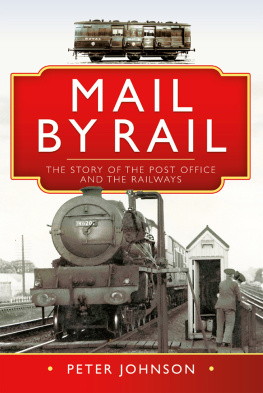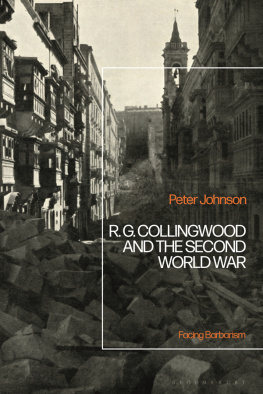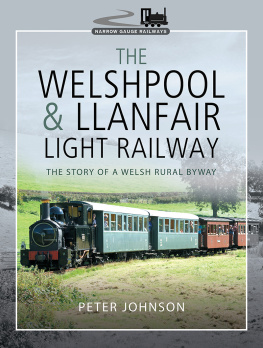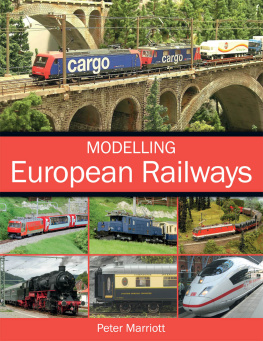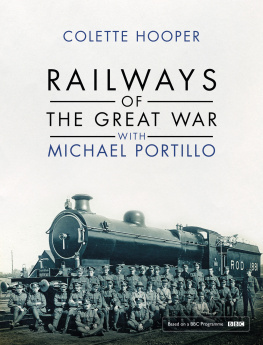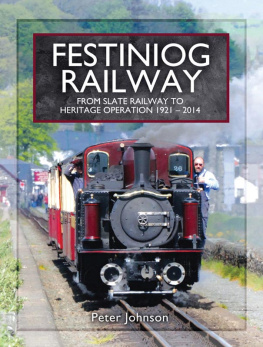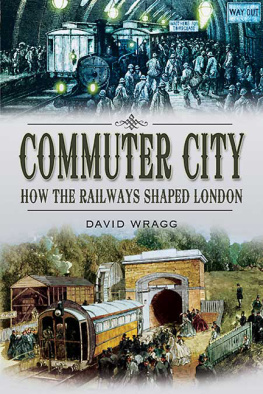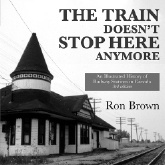
MAIL BY RAIL
THE STORY OF THE POST OFFICE AND THE RAILWAYS
MAIL BY RAIL
THE STORY OF THE POST OFFICE AND THE RAILWAYS
PETER JOHNSON
Endpaper : Plan of the Post Office (London) Railway showing the route and proposed extensions submitted to the Parliamentary select committee that dealt with the Bill in 1913.
Back of title
A carefully posed photograph of the mail exchange apparatus at Colwyn Bay.
Title page : Two postmen look on as a Great Northern Railway express passes the lineside apparatus where they have loaded two pouches to be collected.
Front cover: An LNWR express from Holyhead at Bushey troughs, circa 1900. The first two vehicles after the locomotive are Post Office stock. (F.E. Mackay)
Rear jacket top: One of the 1930-built Post Office (London) Railway cars passing a junction with the Rathbone place deviation.
Rear jacket lower: The green train pulls into the Mail Rail platform at Mount Pleasant on 4 December 2018. The area was originally the Post Office Railways maintenance workshop.
First published in Great Britain in 2022 by
Pen and Sword Transport
An imprint of
Pen & Sword Books Ltd.
Yorkshire Philadelphia
Copyright Jonathan Willis, 2022
ISBN 978 1 52677 613 6
eISBN 978 1 52677 614 3
Mobi ISBN 978 1 52677 614 3
The right of Jonathan Willis to be identified as Author of this work has been asserted by him in accordance with the Copyright, Designs and Patents Act 1988.
A CIP catalogue record for this book is available from the British Library.
All rights reserved. No part of this book may be reproduced or transmitted in any form or by any means, electronic or mechanical including photocopying, recording or by any information storage and retrieval system, without permission from the Publisher in writing.
Pen & Sword Books Ltd incorporates the imprints of Pen & Sword Books Archaeology, Atlas, Aviation, Battleground, Discovery, Family History, History, Maritime, Military, Naval, Politics, Railways, Select, Transport, True Crime, Fiction, Frontline Books, Leo Cooper, Praetorian Press, Seaforth Publishing, Wharncliffe and White Owl.
For a complete list of Pen & Sword titles please contact
PEN & SWORD BOOKS LIMITED
47 Church Street, Barnsley, South Yorkshire, S70 2AS, England
E-mail:
Website: www.pen-and-sword.co.uk
or
PEN AND SWORD BOOKS
1950 Lawrence Rd, Havertown, PA 19083, USA
E-mail:
Website: www.penandswordbooks.com
INTRODUCTION
T he connection between railways and the Post Office started with the opening of the Liverpool & Manchester Railway in 1830 and has been maintained until the present day.
Following the carriage of bagged mail on the first inter-city trains came the travelling post offices, which ran from 1838 until 2004, sorting mail in transit, a vital component of the efficient operation of the countrys communications until electronic systems reduced the volumes carried.
TPO operation was facilitated by the lineside transfer apparatus that enabled mail to be picked up and set down at smaller locations without the trains having to stop. Developed to a degree of sophistication, the apparatus was also the cause of a number of accidents and several people are known to have died, not all of them employed by the Post Office.
After the day mails ended in 1939 TPOs fell out of public awareness, except for those who had cause to frequent stations at night after the restoration in 1946, where the sight of Post Office carriages in their special liveries, postmen loading and unloading mails, and glimpses through open doors of letters being sorted, stood out from the normal routine of railway operations.
John Griersons classic 1936 documentary film Night Mail had brought TPOs to public attention and invested them with a romantic allure. It remains popular with audiences nearly 100 years after its release. The so-called great train robbery, the 1963 attack on the Up Special TPO and the theft of 2 million, created headlines around the world, also raising awareness of TPO operations. Anyone who was unaware of TPOs before was certainly aware afterwards.
Media interest ensured that the end of TPO operation in January 2004 attracted substantial crowds to turn out on a crisp, clear night to witness the end of an era, celebrating 166 years of service transporting the mail in an optimum manner.
For a few months no mail was carried by rail, but then an experimental service of carrying bagged mail in the Post Offices own electric trains was started. At the time of publication two trains a day are run between London and Warrington and Glasgow and one between London and Low Fell, Gateshead.
The Post Offices long-time association with main line railways was not its only railway connection however, for from 1927 until 2003 it ran its own railway under the streets of London, carrying mail between nine sorting offices and two railway stations, speeding up transfers by avoiding the busy streets above. The 6 mile long underground railway was a technical innovation when it opened, as its trains ran unmanned.
Both the advent of electronic communications and the diversion of travelling post offices from London termini to the Willesden distribution centre in 1996 reduced the volume of mail being handled by the railway and led to its closure in 2003. In 2017 a short section of it was reborn as a tourist attraction operated by The Postal Museum, the venture proving to be an immediate success.
ACKNOWLEDGEMENTS AND SOURCES
I n June 1966, the Peterborough-Crewe TPO became the first TPO to operate through my home city of Leicester for many years. Hearing of this, not long after I went along to the station one evening to see it. It was an unusual experience, for the train was met by several police officers who observed the unloading of a trolley loaded with high value mail but who faded away as soon as it was wheeled down the platform. Handing in some self-addressed envelopes to secure the TPOs distinctive post mark I returned home.
Some ten years later a magazine published an item on the Post Office Railway, saying that visits could be arranged by telephoning the number that it gave. I rang it, and went that day, spending the afternoon at Mount Pleasant with a very enthusiastic officer who was keen to show me every aspect of the railway.
These stories illustrate my longstanding interest in these aspects of processing mail by the Post Office. From 1984 I enjoyed several visits to TPOs, both under normal working conditions and on special occasions. I also made several more visits to the Post Office Railway, usually to Mount Pleasant but also to Paddington and King Edward Building stations.
This book contains material first published in Mail by Rail the history of the travelling post office and the Post Office Railway (Ian Allan, 1995) and in An Illustrated History of the Travelling Post Offices (Oxford Publishing Co, 2009), which drew on research carried out at the Postal Museum and the National Archives, Kew.
While the restrictions imposed during the coronavirus pandemic prevented a return to the archives it was possible to obtain copies of plans and Acts of Parliament from the Parliamentary Archives and to access digitised newspapers in the British Newspaper Archive (britishnewspaperarchive.co.uk), the digital archives of The Times and The Guardian, and historic Hansard (archives.parliament.uk/) to add to the material sourced earlier. Genealogical information was obtained from Ancestry (ancestry.co.uk).
Next page
